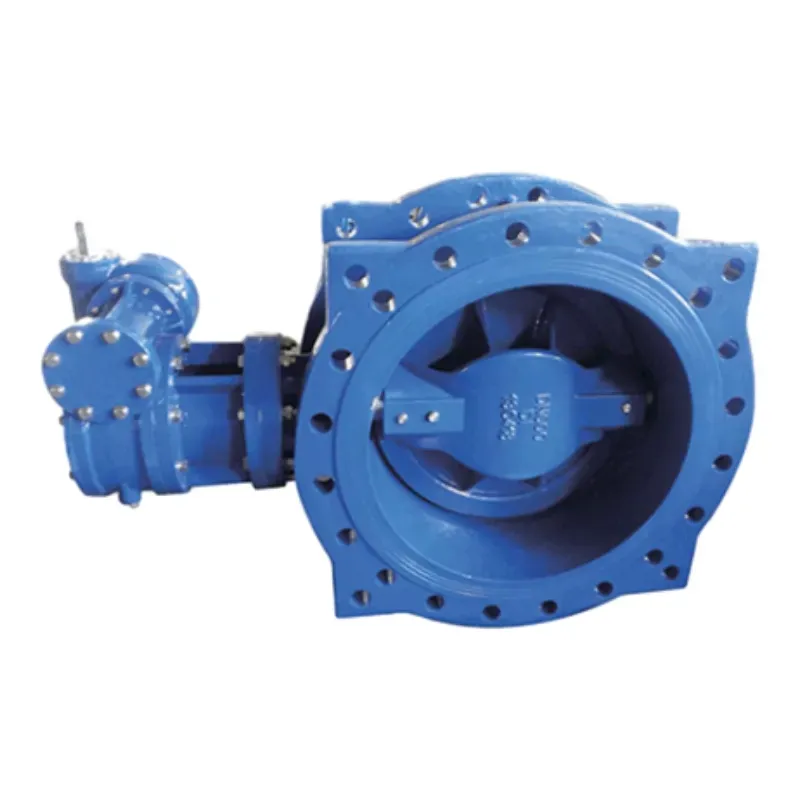10 月 . 02, 2024 00:35 Back to list
Flanged Butterfly Valve Benefits and Applications in Industrial Settings
Understanding Flanged Butterfly Valves A Comprehensive Overview
Flanged butterfly valves are essential components in various industrial applications, particularly in fluid control systems. Their unique design, characterized by a rotating disc that regulates flow, makes them highly efficient and reliable. This article explores the features, benefits, applications, and maintenance of flanged butterfly valves, providing a comprehensive understanding of why they are a preferred choice for many professionals in the field.
Features
Flanged butterfly valves consist of a circular disc (the butterfly) mounted on a rotating shaft. The distinctive flanged ends allow for easy connection to pipes, facilitating a tight seal and ensuring stability under pressure. They are typically made from durable materials like cast iron, stainless steel, or plastic, which makes them suitable for diverse environments, including chemical processing, water treatment, and HVAC systems.
The operation of a flanged butterfly valve is straightforward. When the valve is opened, the disc rotates parallel to the flow direction, creating minimal resistance. Conversely, when closed, the disc obstructs the flow path, effectively sealing the system. This design allows for quick opening and closing, which is crucial in applications that require rapid flow adjustments.
Benefits
One of the most significant advantages of flanged butterfly valves is their compact design. Compared to traditional gate valves, butterfly valves occupy less space and are lighter, reducing the overall weight of piping systems. This feature is particularly beneficial in industries where space and weight constraints are critical.
Moreover, flanged butterfly valves provide excellent throttling capabilities. They can regulate flow with precision, making them an ideal choice for applications requiring fine control of fluid dynamics. Their low pressure drop is another advantage, as it contributes to energy savings by minimizing the force needed to move fluids through the system.
flanged butterfly valve

The simplicity of the design also means fewer parts are involved, leading to easy installation and maintenance
. Professionals appreciate that flanged butterfly valves can often be serviced without removing them from the pipeline, a significant advantage in maintaining system uptime.Applications
Flanged butterfly valves are versatile and find applications across various industries. In the water and wastewater treatment sectors, they control the flow of water, chemicals, and sludge, ensuring efficient processing. The food and beverage industry also utilizes these valves to manage the flow of liquids like milk, juice, and beer — applications where hygiene and safety are paramount.
Additionally, flanged butterfly valves are commonly used in heating, ventilation, and air conditioning (HVAC) systems. They regulate the flow of air and steam, contributing to the proper functioning of climate control systems. In the oil and gas industry, these valves are instrumental in controlling the flow of hydrocarbons, enhancing safety, and operational efficiency.
Maintenance
To ensure optimal performance and longevity, regular maintenance of flanged butterfly valves is essential. This includes inspection for signs of wear, such as cracks or corrosion, which can compromise their effectiveness. Lubricating the valve shaft and checking the seals for leaks are also crucial maintenance tasks. By adhering to a regular maintenance schedule, operators can prevent unexpected failures and extend the lifespan of their valve systems.
Conclusion
Flanged butterfly valves are indispensable in modern industrial applications due to their efficiency, space-saving design, and versatility. From water treatment facilities to HVAC systems, their ability to control and regulate fluid flow makes them a preferred choice for many engineers and technicians. As industries continue to evolve, the role of flanged butterfly valves in ensuring operational reliability and efficiency cannot be overstated. Understanding their features, benefits, applications, and maintenance needs allows professionals to make informed decisions, ultimately enhancing their systems' performance and longevity.
Share
-
Understanding the Differences Between Wafer Type Butterfly Valve and Lugged Butterfly ValveNewsOct.25,2024
-
The Efficiency of Wafer Type Butterfly Valve and Lugged Butterfly ValveNewsOct.25,2024
-
The Ultimate Guide to Industrial Swing Check Valve: Performance, Installation, and MaintenanceNewsOct.25,2024
-
Superior Performance with Industrial Swing Check Valve: The Essential Valve for Any SystemNewsOct.25,2024
-
Industrial Swing Check Valve: The Ideal Solution for Flow ControlNewsOct.25,2024
-
You Need to Know About Industrial Swing Check Valve: Functionality, Scope, and PerformanceNewsOct.25,2024